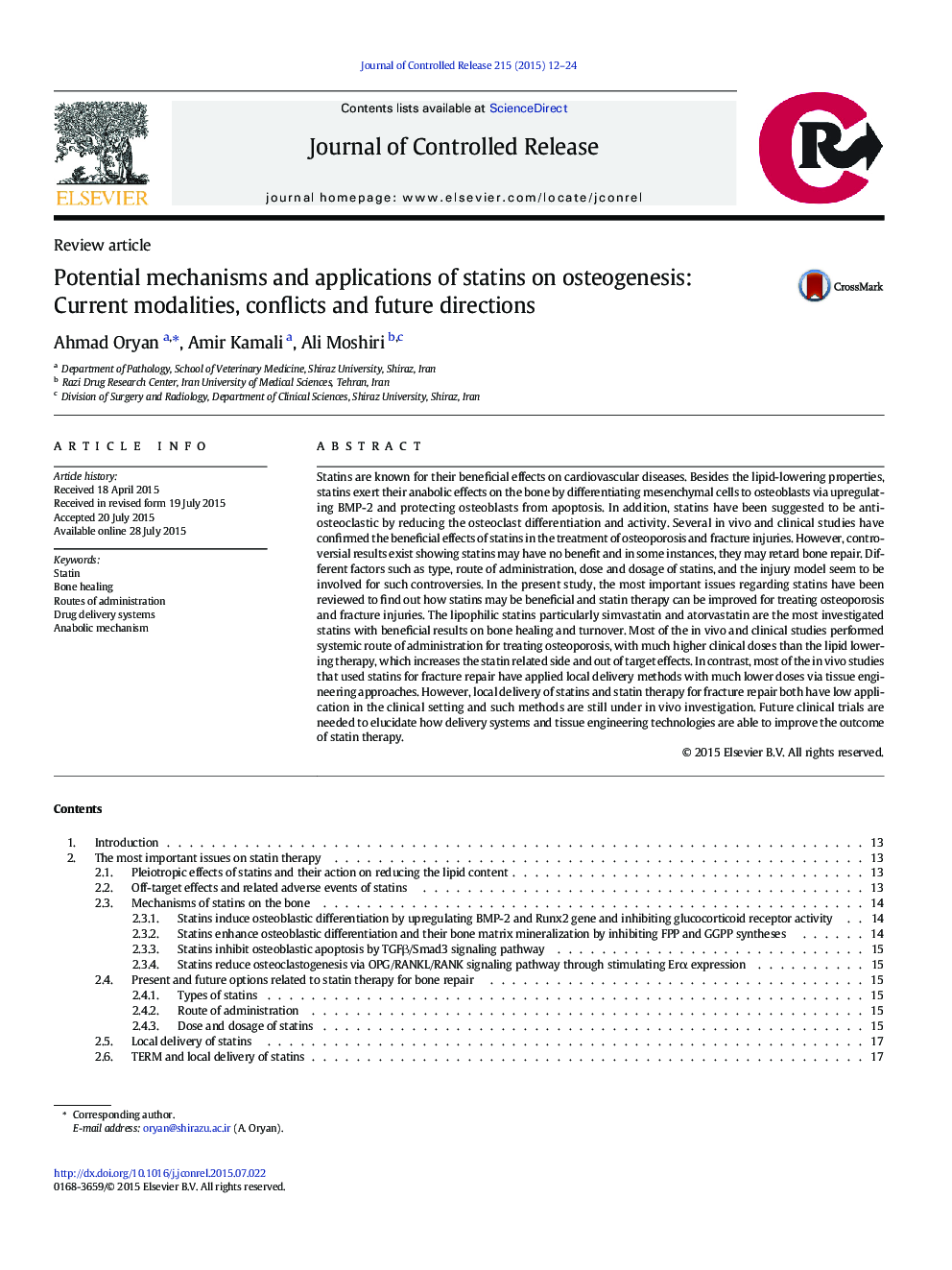| کد مقاله | کد نشریه | سال انتشار | مقاله انگلیسی | نسخه تمام متن |
|---|---|---|---|---|
| 1423694 | 1509034 | 2015 | 13 صفحه PDF | دانلود رایگان |
Statins are known for their beneficial effects on cardiovascular diseases. Besides the lipid-lowering properties, statins exert their anabolic effects on the bone by differentiating mesenchymal cells to osteoblasts via upregulating BMP-2 and protecting osteoblasts from apoptosis. In addition, statins have been suggested to be anti-osteoclastic by reducing the osteoclast differentiation and activity. Several in vivo and clinical studies have confirmed the beneficial effects of statins in the treatment of osteoporosis and fracture injuries. However, controversial results exist showing statins may have no benefit and in some instances, they may retard bone repair. Different factors such as type, route of administration, dose and dosage of statins, and the injury model seem to be involved for such controversies. In the present study, the most important issues regarding statins have been reviewed to find out how statins may be beneficial and statin therapy can be improved for treating osteoporosis and fracture injuries. The lipophilic statins particularly simvastatin and atorvastatin are the most investigated statins with beneficial results on bone healing and turnover. Most of the in vivo and clinical studies performed systemic route of administration for treating osteoporosis, with much higher clinical doses than the lipid lowering therapy, which increases the statin related side and out of target effects. In contrast, most of the in vivo studies that used statins for fracture repair have applied local delivery methods with much lower doses via tissue engineering approaches. However, local delivery of statins and statin therapy for fracture repair both have low application in the clinical setting and such methods are still under in vivo investigation. Future clinical trials are needed to elucidate how delivery systems and tissue engineering technologies are able to improve the outcome of statin therapy.
Figure optionsDownload high-quality image (101 K)Download as PowerPoint slide
Journal: Journal of Controlled Release - Volume 215, 10 October 2015, Pages 12–24
